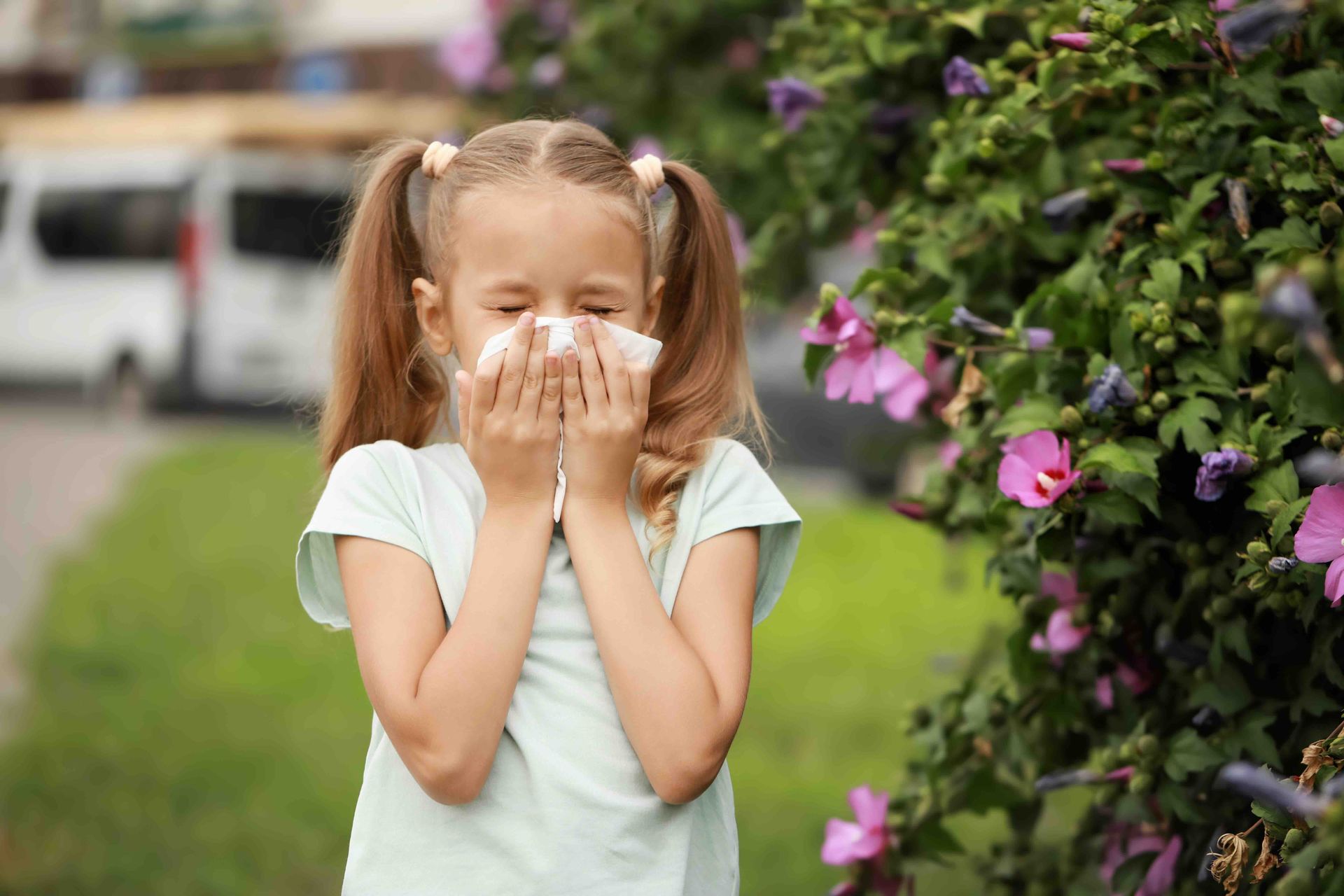HPAI Outbreak in Poultry and Dairy Farms; Michigan on Alert.
Highly Pathogenic Avian Influenza (HPAI), or Influenza H5N1, spreads across dairy and poultry farms in the United States, including Michigan. While only one human case has been identified so far this year (in Texas) and the overall public health risk remains low, the need for doctors to be aware of this situation is urgent. Early identification of potential cases is crucial for preventing the spread of the virus.
The increasing number of infected animals creates more opportunities for human exposure. Human infections with HPAI can range from mild to severe, and early identification of even mild cases is critical. This data will help us understand the dynamics of how the virus transmits from animals to humans. The potential risks of human exposure to HPAI are not just significant; they are a call for us to stay vigilant and act urgently.
With broader circulation, especially across different species, the HPAI virus has a higher chance of undergoing genetic mutations and reassortment. These mutations could lead to a more transmissible or virulent strain in humans. The role of doctors in recognizing and reporting potential human cases to public health authorities is vital. Your actions can significantly help monitor the virus's evolution and protect public health.
Recent testing of raw milk from infected cows has shown the presence of the HPAI virus. However, it's important to note that preliminary results from the FDA indicate pasteurization effectively inactivates the virus. This is a crucial piece of information for everyone's health. It not only underscores the importance of making informed health choices, such as consuming only pasteurized dairy products but also instills confidence in the effectiveness of this measure in significantly reducing the risk of HPAI transmission.
While the current risk to the public remains low, HPAI's spread in animal populations warrants close attention from doctors. Early identification of human cases and continued vigilance are crucial in mitigating this virus's potential impact.
Highly Pathogenic Avian Influenza
Influenza H5N1 is a highly contagious and deadly viral disease that primarily afflicts birds. While various influenza A viruses circulate naturally among wild birds, HPAI strains are particularly virulent. This translates to a rapid onset of severe illness in infected birds, often leading to death.

Origin and Evolution
The exact origin of HPAI remains unclear, but scientists believe it likely originated from mutations within low pathogenic avian influenza (LPAI) viruses, a common type of influenza found in wild birds. LPAI viruses typically cause mild or no symptoms in birds but can mutate into highly pathogenic strains under certain circumstances. This mutation process can occur within a single bird or through the reassortment of genetic material between different influenza viruses infecting the same host.
Several factors are thought to contribute to the emergence of HPAI. One factor is intensive poultry farming practices. Crowded conditions in poultry farms create an ideal viral transmission and mutation environment. Additionally, the widespread use of vaccines against specific influenza strains in poultry can inadvertently pressure the virus to evolve around the existing vaccine, potentially leading to new, more virulent strains.
The H5N1 strain, the most commonly associated with HPAI outbreaks, first emerged in Southeast Asia in the late 1990s. Since then, it has spread to numerous countries worldwide, causing significant economic losses in the poultry industry. Notably, HPAI outbreaks can lead to mass culling of infected flocks to prevent further spread.
Causes of HPAI
Specific subtypes of the influenza A virus causes HPAI. Influenza A virus is segmented, meaning its genetic material is contained in eight separate RNA segments. This segmented nature allows for reassortment, the exchange of genetic segments between different influenza viruses infecting the same host. Reassortment can lead to the creation of new influenza viruses with unpredictable characteristics, including increased severity.
The two critical proteins on the influenza A virus surface are the hemagglutinin (HA) and neuraminidase (NA). The H and N proteins are responsible for the virus's ability to attach to and infect host cells. The H5 designation in HPAI refers to a specific type of HA protein, while N1 refers to a particular kind of NA protein. These specific proteins contribute to the high virulence of HPAI viruses.
Symptoms of HPAI in Birds
HPAI paints a grim picture for infected birds, transforming seemingly healthy flocks into battlegrounds of rapid and severe illness. This viral disease, primarily targeting poultry, unfolds with a devastating array of symptoms that signal a desperate fight for survival.
The hallmark of HPAI is its swift onset. Birds previously exhibiting normal behavior can deteriorate rapidly, often displaying a combination of respiratory and neurological signs. Difficulty breathing becomes a prominent feature, with infected birds gasping for air, coughing, and showing signs of respiratory distress.
The virus's attack on the nervous system manifests in a range of concerning neurological symptoms. Infected birds may develop tremors, lose coordination, and exhibit an unusual head tilt. Seizures are not uncommon, further adding to the distressing picture.
The outward appearance of infected birds also takes a sinister turn. Swelling and discoloration of the head, eyelids, wattles (fleshy growth under the beak), and shanks (legs) become visible. This inflammation adds a grotesque element to the already alarming situation.
Beyond these outward signs, HPAI wreaks havoc on the internal systems of birds. Loss of appetite and weight loss are common, highlighting the virus's debilitating effect. Lethargy sets in, and birds become increasingly withdrawn and unresponsive. In some cases, this fight for survival ends abruptly with sudden death, leaving behind healthy-looking birds moments before succumbing to the virus.
The rapid progression of these symptoms leaves little time for treatment. The high mortality rate associated with HPAI, often exceeding 90% in infected flocks, paints a grim picture of the devastating impact this disease has on bird populations.
Early detection and immediate response are crucial for minimizing the spread of HPAI. Farmers and veterinarians must observe their flocks for any signs of illness. Biosecurity measures become paramount, with strict protocols in place to prevent the introduction of the virus into healthy flocks.
While seeing birds afflicted with HPAI is undeniably disturbing, understanding these symptoms is vital. This knowledge allows for early intervention, potentially slowing the spread of the virus and minimizing the suffering of infected birds.

Human Risk and Public Health Concerns
While primarily devastating to bird populations, HPAI casts a long shadow of concern over human health. Although human infections with HPAI viruses are rare, the potential for spillover and a broader public health threat cannot be ignored.
The primary risk of HPAI for humans comes from close contact with infected birds or contaminated environments. Poultry farm workers, veterinarians involved in outbreak control, and individuals participating in backyard poultry raising are at an increased risk of exposure. Transmission can occur through inhalation of respiratory droplets from infected birds, contact with contaminated feces or secretions, or touching a contaminated surface and the face.
Human infections with HPAI can manifest in a spectrum of severity. Some individuals may experience mild illness with symptoms like fever, cough, sore throat, muscle aches, and headaches. This mild presentation can be easily mistaken for a common cold or seasonal flu. However, the actual danger lies in the potential for severe illness.
In more severe cases, HPAI can lead to the rapid development of viral pneumonia, a severe lung infection that can cause difficulty breathing, low blood oxygen levels, and even death. Additionally, some individuals may experience complications like respiratory failure, multi-organ failure, and septic shock. The high mortality rate associated with HPAI in humans, ranging from 30% to 50% in documented cases, underscores the seriousness of this public health concern.
Beyond the immediate threat of severe illness, the most significant public health concern surrounding HPAI lies in its potential to mutate and acquire the ability for efficient human-to-human transmission. While current HPAI strains primarily spread from birds to humans, a single mutation could trigger a global pandemic. This scenario, where the virus can quickly spread between people, has the potential to overwhelm healthcare systems and cause widespread illness and death.
The H5N1 strain of HPAI, in particular, raises concerns due to documented instances of human-to-human transmission in limited settings. While these incidents haven't resulted in sustained human-to-human spread, they highlight the potential for this virus to evolve further.
Mitigating the risk of HPAI for humans requires a multi-pronged approach. Public health officials must maintain robust surveillance programs to detect outbreaks in poultry populations early on.
- Strict biosecurity measures on poultry farms are crucial to preventing contact between infected birds and humans.
- Additionally, raising public awareness about safe handling practices around poultry and proper hygiene after contact with birds is essential.
- Furthermore, research on HPAI viruses and developing effective human vaccines are critical to preparing for future outbreaks.
- Stockpiling antiviral medications may also be necessary to mitigate the impact of a pandemic.
Guidelines for Doctors
HPAI poses a severe threat to bird populations and potentially risks human health. Doctors in Michigan, a state with recent HPAI outbreaks identified in poultry and dairy farms, face a crucial responsibility. Staying informed and implementing specific protocols are essential to ensuring the well-being of their patients.
Heightened Awareness and Patient History
Michigan healthcare providers should be more aware of HPAI and its potential for human exposure. During consultations with patients presenting with influenza-like illness (ILI), it's essential to inquire about potential risk factors. Ask your patients detailed questions about their recent activities, specifically those involving exposure to birds, dairy cows, or other possible sources of HPAI. This includes working on farms, participating in backyard poultry raising, or visiting areas with known outbreaks.
Testing and Treatment
Individuals with symptoms compatible with influenza (fever, cough, sore throat, muscle aches, etc.) and identified risk factors for HPAI exposure should be tested immediately. The Michigan Department of Health and Human Services (MDHHS) Bureau of Laboratories (BOL) provides testing services for HPAI. Refer to the MDHHS guidelines for proper sample collection and submission procedures.
Early Intervention with Antivirals
Due to the potential severity of HPAI, a low clinical threshold for initiating antiviral medications is crucial. Antivirals like oseltamivir can significantly improve outcomes and reduce complications, particularly when started promptly. Don't delay treatment while awaiting test results—early intervention can make a significant difference.
Vaccination and Public Health Education
Doctors should strongly recommend seasonal influenza vaccination for all individuals working on poultry or dairy farms. While this vaccine doesn't prevent HPAI infection, it can minimize the risk of coinfection with seasonal influenza and HPAI viruses. Coinfection can potentially worsen the illness and make treatment more challenging.
Prioritizing Pasteurization: Protecting Patients from Raw Milk Risks
Remind your patients about the dangers associated with consuming raw or unpasteurized milk. While HPAI testing has shown viral shedding in raw milk samples, preliminary results suggest that pasteurization effectively inactivates the virus. Educate your patients about the importance of consuming only pasteurized dairy products to avoid exposure to various pathogens, including HPAI, but also bacteria like Campylobacter, Cryptosporidium, E. coli, Salmonella, and Listeria monocytogenes.
By following these guidelines and remaining vigilant, Michigan's healthcare community can play a vital role in protecting public health from the threat of HPAI. Early diagnosis, prompt treatment, and preventative measures like vaccination will help safeguard Michiganders from this potentially severe avian influenza.

Your Family’s Health Is Our Priority
Your wellness matters to us. Take the next step in your care today.
1020 4th Ave
Lake Odessa, MI 48849
oFFICE HOURS
- Mon - Tue
- -
- Wed - Thu
- -
- Fri - Sun
- Closed
AFTER HOURS EMERGENCY CONTACT
1020 4th Ave
Lake Odessa, MI 48849
oFFICE HOURS
- Mon - Tue
- -
- Wed - Thu
- -
- Fri - Sun
- Closed
AFTER HOURS EMERGENCY CONTACT
All Rights Reserved
FAMILY MEDICAL CENTER
website designed by SPECK DESIGNS
All Rights Reserved | FAMILY MEDICAL CENTER
website designed by SPECK DESIGNS




